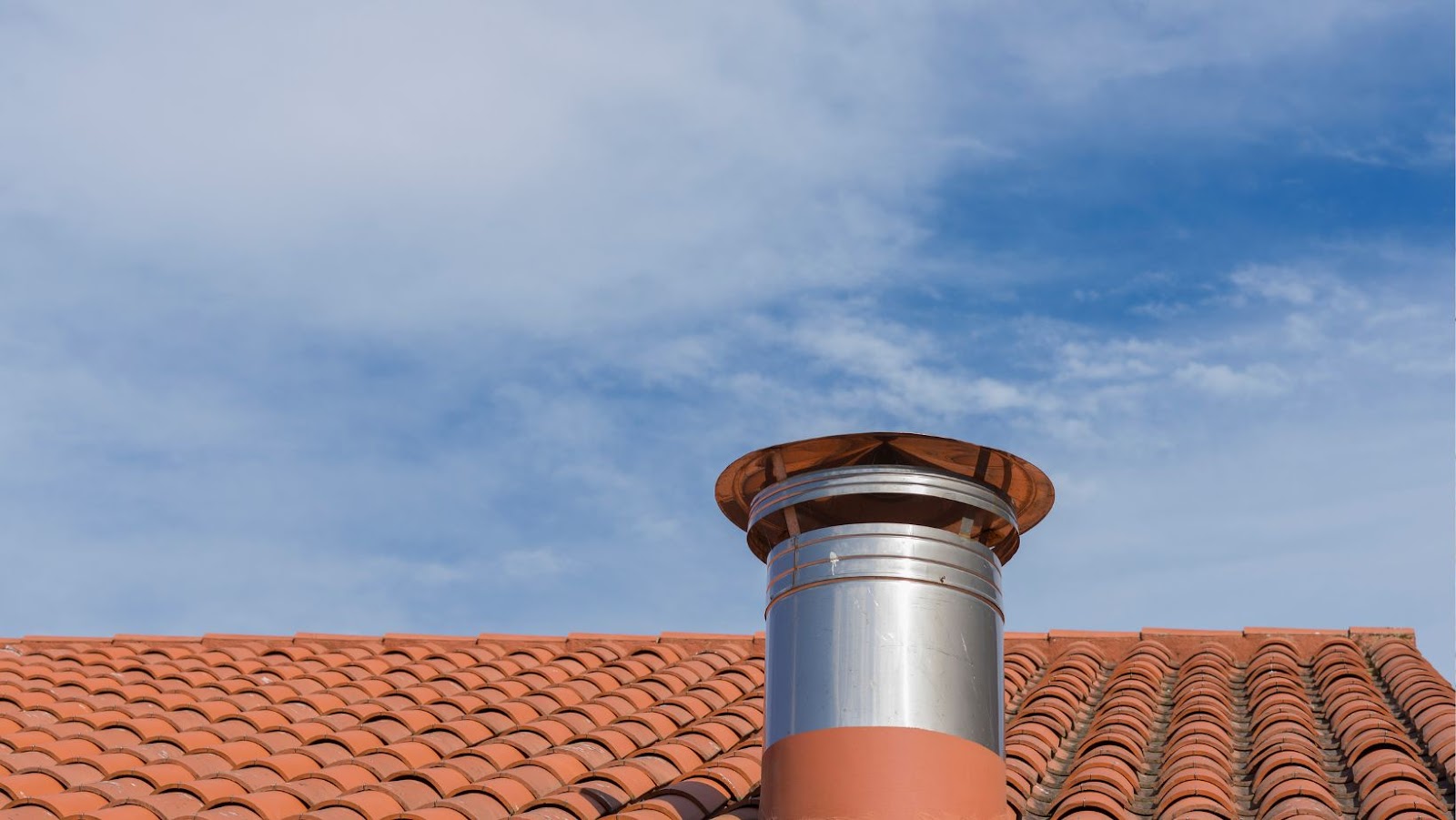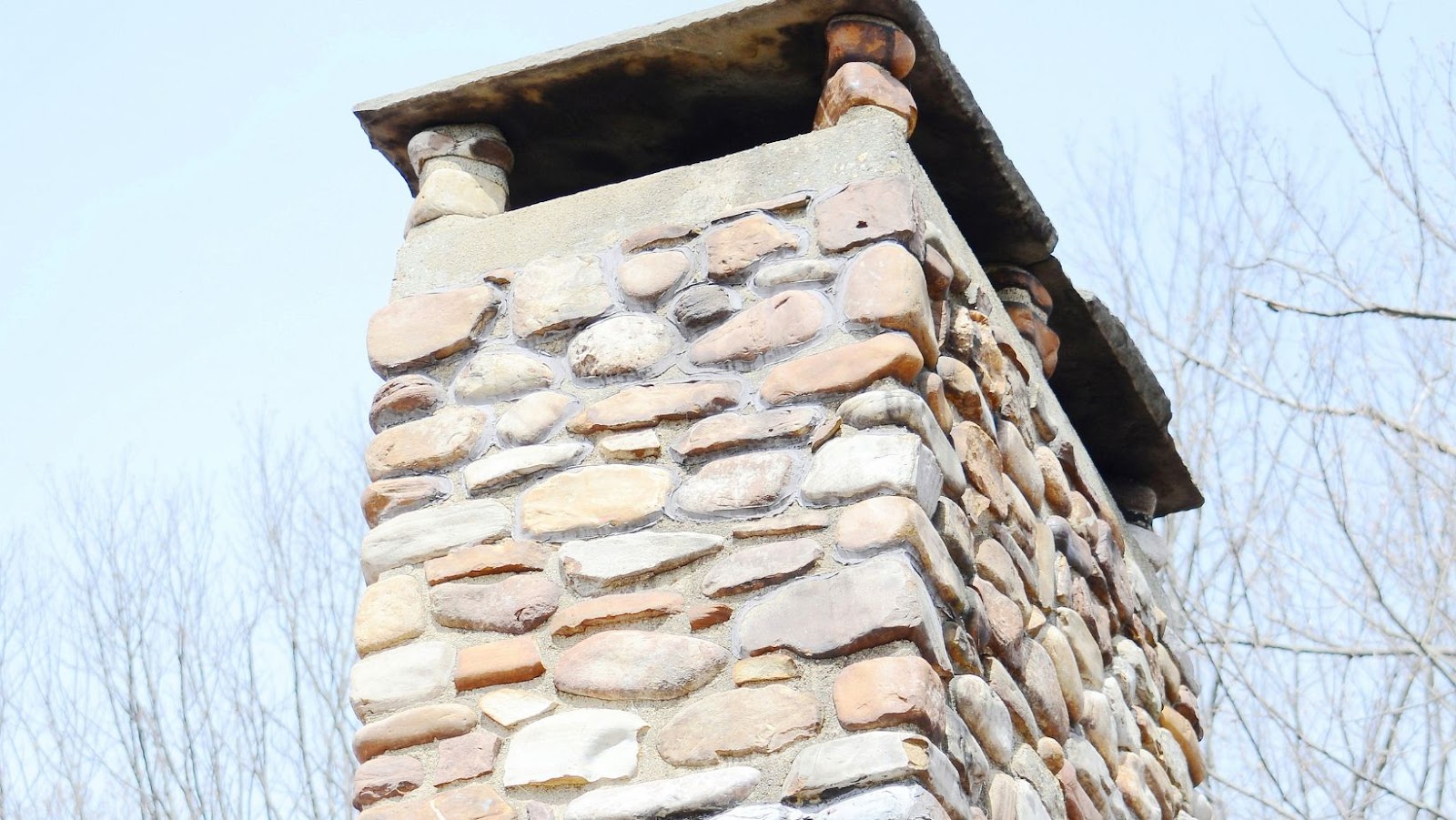
The chimney is one of the most iconic and well-known items in our homes. It has a deep and intricate history, going back for centuries, and has been a staple of houses for years. It is interesting to note how it got its name, as its origins are deeply embedded in our past. In this article, we will delve into the history of the chimney, and how it got its name. We will also discuss the various practical purposes of the chimney and why it is so important to have one in your home.
How did chimney get his name
The word “chimney” is derived from the Latin word for fireplace, “caminus.” The word was first used in English during the 14th century to describe a fireplace or furnace with an internal flue or smoke duct. As time passed, the term began to refer to the exterior structure of a building attached to a fireplace, which is now commonly known as a chimney.
In its most basic form, the chimney is an external structure that allows smoke and hot gasses from a building’s interior space such as a furnace, cooker or fireplace escapes into the outdoor atmosphere. It typically consists of four components: a firebox, smoke chamber, flue and crown/cap. The firebox holds and lights the fuel while allowing combustion products (smoke) to enter the adjoining smoke chamber before venting up and out of the flue at the top via an opening in its cap or crown.
Today there are many variations of how different types of chimneys are designed and constructed depending on their function (multi-flue vs single-flue design) and by material used for their construction ranging from brickwork, stonework or metal (stainless steel). Such design considerations provide safe ventilation necessary for fireplaces that burn either wood logs or coal/oil in warmer climates. Understanding how these various parts all work together can help homeowners better maintain their chimneys with regular cleaning and repairs when necessary ensuring optimal airflow for long lasting performance value for years to come.
The Use of Fireplaces in Ancient Times
Throughout history, evidence of fireplaces and chimneys can be found in many different cultures. During late prehistoric times, when fire was used primarily for warmth and cooking, there is evidence that the hearth (from which the use of the term ‘heart’ derives) was a very important part of life especially during the winter months. In particular, ancient civilizations such as those in Egypt and India have documented artwork depicting individuals huddled around an open fireplace.
The use of fireplaces dates back to prehistoric times, but chimneys were not present until much later. The use of a chimney began to take shape during 16th century Europe when furnace drafts started to build up enough pressure to force smoke up a flue and clear away from homes. By replacing open fireplaces with flues and chimneys, enclosed fires were no longer necessary—allowing more air flow into homes and clearing away dangerous smoke. The invention may have saved lives but its practicality gave rise to its name: chimney is derived from the Latin words “caminus” meaning fireplace or oven and “camana” meaning arch—forming an arch over one’s home that diverted smoke away from people living inside.
The Development of the Chimney
The chimney is one of the most integral parts of our modern home. However, it has quite an interesting history. Long ago, during the Iron Age, chimneys were first constructed in Europe, and the name “chimney” is derived from the Latin word for fireplace, “caminus.” This was also the period during which the fireplace began to be enclosed by a stone wall and a chimney built to draw smoke away from the house. Let’s explore the development of the chimney further.
The Introduction of the Masonry Chimney
The earliest record of the use of a masonry chimney dates back to 1050 AD in Switzerland. This particular chimney was built out of brick. Since then, the technology has evolved greatly and can be traced to many different locations throughout Europe, such as Germany and Italy.
The masonry chimney was mostly used in the medieval era as an effective way to draw up hot gasses from fires. The introduction of this revolutionary technology made it much easier for builders to construct tall buildings in crowded places while minimizing smoke emissions in inhabited areas.
The term ‘chimney’ first appeared around 1290 AD and derived its name from the Latin word ‘caminus’, meaning fireplace or furnace. The term ‘chimney’ began referring not only to the actual shaft extending from the fireplace but also to a complete masonry structure built around it. Through continuous refinement, Masonry chimneys would come to provide superior protection against fire hazards and weather elements alike – making them an indispensable part of both urban dwellings and suburban households all over Europe for centuries to come.
The Development of the Modern Chimney
The modern chimney first appeared in the early 14th century, though its origin can be traced back to the Romans, who were one of the first societies to use them. The etymology of the word “chimney” comes from the Latin “caminus” or “hearth,” referring to a circular hearth used for cooking. In Southern Europe during the medieval era, it was commonplace for a fire to be built in a circular container set into a wall, thereby providing heat and ventilation to an entire structure.
These simple beginnings eventually expanded into more complex designs, such as those found in Northern Europe by the 15th century. Emerging from this tradition is today’s taller and more complex chimney featuring two or three flues and extending through several stories of a building. By this stage, its main purpose had shifted from heating multiple rooms within one structure to providing ventilation for fireplaces and stoves located on different floors. As technology progressed throughout the ensuing centuries, even taller masonry chimneys were designed in order to cope with increasing demands from households and industry alike.
Today’s safety regulations now require that all chimneys meet stringent standards in regard to size and materials used (e.g., bricks/mortar), while allowing for customization based on individual needs and locations; some are over 50 feet tall! Whether traditional or contemporary in style, modern chimneys play an integral role in creating optimal air circulation within our homes while offering invaluable protection against fire damage.
The Practicality of the Chimney
The chimney has been around for centuries and has been used in numerous ways. Its name derives from its primary purpose, which is to provide an outlet for the smoke generated by a fire. The chimney has been instrumental in providing safety and comfort in homes around the world. In this article, we’ll explore the practical aspects of the chimney, including how it affects the structure of a building and how to properly maintain a chimney.
How the Chimney Improves Fire Safety
The chimney is an essential component of a building and has long been the symbol of home comfort, warmth, and safety. It’s designed to keep smoke from entering a home or other structure by providing an outlet for it to escape. This means that it helps to create a safer indoor environment for your family.
Chimneys also enhance fire safety by providing extra insulation and insulation that prevents smoke particles from entering the home. This is especially important in homes that use wood burning stoves or fireplaces as smoke can easily enter spaces where open flames are present if no chimney is present.
The name “chimney” originates from the French language with “cheminée,” meaning fireplace. Much like many architectural terms, this original definition has been adapted over time into various languages and contexts when referring to this specific structural component. The chimney’s origin dates back to ancient civilizations in which people used vertical shafts made with poles and clay to allow heat accumulation while emitting smoke outside their living space. Today, modern fireplaces have changed significantly but the idea remains the same—using an insulated chamber or shaft as an escape passage for those combustion byproducts typically released when a fire is lit indoors.
The Benefits of the Chimney for Heating
The chimney is an important structure in a home or building, providing both warmth and ventilation. The material used in the making of a chimney makes it durable and able to withstand harsh weather conditions. Brick, typically used to construct a chimney, can be made from clay, fireclay, shale, or other materials. Chimneys are often lined with reinforced concrete or clay flue liners to withstand heat better and provide extra ventilation.
Chimneys act as a route for smoke to escape from fireplaces and stoves; without them burning fuel would become difficult and more dangerous. They are well insulated against heat loss so that more of the smoke is expelled than what gets released back into the home or building. This reduces the amount of smoke produced when using the appliance allowing it to run more efficiently.
The shape of a traditional masonry chimney provides natural draught which allows smoke and gasses to be pulled up through the flue at an efficient rate creating a strong-drawing chimney. Additionally, most wood-burning appliances require some sort of combustion air supply which can be supplied through specially designed air vents in the masonry chimney structure; this helps improve combustion efficiency ensuring that all fuel gets burned off with little waste being produced.
Finally, existing fireplace liners are often replaced by metal liners made from aluminum alloy or stainless steel offers improved temperature resistance meaning that fires can last longer burning fuel hotter creating greater energy efficiency for heating on cold days/nights compared too without them meaning less energy consumed providing better overall cost savings for homeowners when heating their home during winter months with only minor costs associated with installation & maintenance checks depending on system design within certain local building regulations (if applicable).
The Popularity of the Chimney
The chimney has long been a fixture in homes around the world, and it has been a source of both warmth and curious conversation. But how did the chimney get its name? Its history is fascinating and complex, and the story of how it became a popular addition to homes reveals a great deal about its practicality.
The Rise of the Chimney in Europe
The chimney has long been a mainstay feature of the European home. Although the use of fireplaces and stoves can be traced back to antiquity, chimneys are a more recent development. It is not known for certain when the first chimney was built, however chimneys were in use in both England and France by the 13th century, and from there spread throughout Europe.
The name “chimney” originates from its French name “Cheminee”, meaning hooded fireplace as it was thought of as an external hood surrounding an internal fire. Chimneys have become popular due to their ability to reduce smoke pollution in the home compared to open fires, and due to their potential for increasing efficiency by allowing heat to be carried further away from a fireplace or stove.
Modern day chimney design has gone through many changes over the years as practicality requirements shift; with shapes adapted for smoke gasses and flue liners changed for better insulation among others changes being made. This type of feature has proved so popular that developing countries like India have even adapted it into traditional building designs such as mud huts that have half divisions known as separate kitchen-cum-living rooms with a central well acting as a potential flue location!
The Spread of the Chimney Across the World
The chimney originated in Europe during the Middle Ages, and by the mid-1800s it had spread to most parts of the world. The first use of a chimney in Europe was to help vent smoke produced by cooking and heating. From this simple beginning, the chimney gradually began to gain popularity among builders due to its efficiency in keeping homes warm and dry.
Since then, the chimney has become an integral part of many architectural designs all over the world. The design, height and shape of a chimney can vary wildly from one country to another. Some countries, for example, adopted tall brick or stone towers with multiple fireplaces on each floor – also known as “tower houses” – which became a symbol for much of their architecture.
There is some debate about how exactly the name ‘chimney’ came about since it first appeared in England around 1550. Some believe that it derives from the Latin word “cheimarus” which means vaulted or enclosed space while others believe it originates from “cynne” (meaning funnel or cylinder) or “cumin” (meaning smoke). Ultimately though, this will remain a matter of speculation as nobody knows for sure where exactly this name came from!
Conclusion
In conclusion, the chimney’s name can be traced back to its origins of being an essential structure for keeping smoke out of the homes of families and dispelling the air pollutants out of their homes. The chimney is an indispensable part of a house and it has been able to hold that traditional name for centuries and through multiple cultures. It is important to remember that the chimney is not only a practical structure but also a piece of history that has been preserved in many cultures.
The Significance of the Chimney in Modern Times
The term “chimney” is derived from the Latin for “room for smoke” and has been in use since at least the Middle Ages. Before the chimney was invented, structures were heated by open fires with smoke simply allowed to escape through a hole in the roof. With its invention, smoke was able to be vented directly outside, away from living areas and out of sight.
Chimneys have been an essential part of human life since their creation, providing good ventilation while being relatively low maintenance and inexpensive. They have become so integrated into our lives that we don’t even think about them; they are simply part of our homes and businesses as a matter of course. In recent times, they have also become a feature of decorative architecture; house facades often feature decorative chimney pots or iconic Gothic shapes introduced by Victorians keen to make a dramatic statement on their homes.
The significance of the chimney is undeniable; it is worth noting here that its presence in life today, despite being largely taken for granted, is testimony to its importance over centuries as an integral part of our living spaces around the world.
The Future of the Chimney
The future of the chimney is uncertain, as many modern homes no longer have them or rely on fireplaces for aesthetics instead of practicality. However, the benefits of traditional fireplaces in urban settings are starting to be recognized.
In colder climates, chimneys help keep the air in a home warmer, and even save on energy costs by allowing for better insulation. Additionally, the aesthetic advantages of having a traditional fireplace are often sought after in urban settings where physical space is limited. As such, there is a growing trend towards bringing real fireplaces back into urban living through fire-safety initiatives and more stringent building codes.
At present, it appears that there will always be a place for the chimney — even in modern times — but its role is likely to remain one of decoration rather than necessity. Nonetheless, its appeal continues to rise as an integral part of an escalating ‘retro’ boom that focuses on combining the best elements of classic and contemporary styles.







